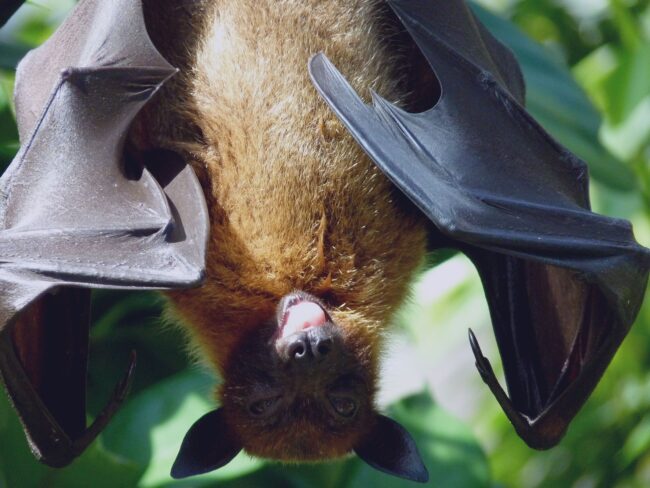Table of Contents
Bats are hard to miss. They zoom past us in our gardens at night. Books and folklore are filled with bats, and let’s not forget those vampire movies where everyone turns into a swarm of bats! Surprisingly, despite being so common and often seen, few people stop to consider if these amazing mammals have tails.
Short answer? They sure do. This article explains all the fascinating facts about bat tails and more! So, without any further ado, let’s dive into an amazing topic that almost never gets any attention.
Do All Bats Have Tails?
There are about 1000 bat species across the world. If we had to list the names of bat species with tails, we’ll be here all day! Instead, it might be quicker to mention that only three varieties lack tails.
But there you go, most bats do have tails. That’s interesting when you think about all the times you’ve seen a bat – but never the tail. Perhaps our biases are at play. Bats are mammals and when we think about mammalian tails, we might subconsciously expect long and obvious tails.
However, the truth is that bats have tiny tails. In fact, their tails are extremely difficult to spot – so don’t blame yourself if you have seen plenty of bats in your lifetime and not a single bat tail! And besides, since these critters prefer the night, the dark makes it even harder to observe their anatomy.
Luckily for you and your eyes, extensive research and studies have proven that most bats not only have tails but that they also vary in size. The latter is dependent on the species and individual bat.
What is the Bat Tail all About?
A bat’s tail is like a downward continuation of its winged membranes. Did you know that in most bat species, their hind legs are partly or completely connected to a membrane known as the uropatagium membrane?
This membrane also covers the tail bone of the bat. The design connects the animal’s hind legs indirectly with its tail, giving the bat more stability and support. If you look at a bat skeleton, you could see a distinct cartilaginous extension right by the ankles that also offers this support.
The membrane is also partially responsible for the fact that so few people actually spot bat tails. Since their tails are so tiny, these appendages are simply not long enough to protrude from the membrane. Ergo, it might appear as if the bat has no tail at all – when it does!
On the flip side, the few species do have tails that are long enough to be seen, so chin up if you now have your heart set on spotting a bat tail.
Bat Tails and Bird tails – Are They Similar?
The moment that you found out that bats have tails, did you also wonder if they share any similarities with bird tails? If you did, then the answer is no. While both are flying creatures, bat tails and bird tails are not exactly two peas in a pod.
The reasons might be obvious to most. First off, these are two completely different types of animals – avians and mammals. This alone makes their anatomies very different. Bats also don’t have feathers, so they can never have tails that are remotely similar in appearance or function to those of birds.
How Do Bats Use Their Tails to Fly?
In case you have found yourself wondering this little question, you might be on to something. Good job, you! Just like birds, bats also use their tails to fly. Go ahead, look up a video of how bats fly. You will make some interesting observations, for sure.
Studies have shown that bats can take off from a plain surface solely because of their tail. Their hind legs are not strong enough to allow the animal to do that. They also flutter their tails much faster than their wings which gives them the lift they need to fly and also to maintain their flight.
It does not matter how long or short a bat’s tail is. Interestingly enough, their tails are also partly responsible for their sense of direction, balance, and stability.
Is There More to a Bat’s Tail Than Helping It Fly?
There are two main aspects apart from flying, in which a bat’s tail serve a very useful purpose. Firstly, bats with long tails can bring their prey to their mouth using their appendage like a limb. Secondly, females need their tails after giving birth. Together with wings and membranes, the mother carries her tiny baby within a blanket tied together with her tail.
A Quick Wrap Up
So as you saw, your suspicion was right! Bats do have tails. At least most of them do. They use their tails for flying, to get a sense of direction, and to remain stable during their speedy flights.
They are nothing like the tails of birds, besides using them for flight navigation. However, bats also have unique purposes for their tails including bringing food to their mouths and securing their babies.
Let this article remind you of a wonderful thing – there are tiny details hidden everywhere in nature, wonderful surprises just waiting for you to discover them! So, the next time you are outdoors, keep an eye out for these hard-to-spot features in animals, birds, and plants!

